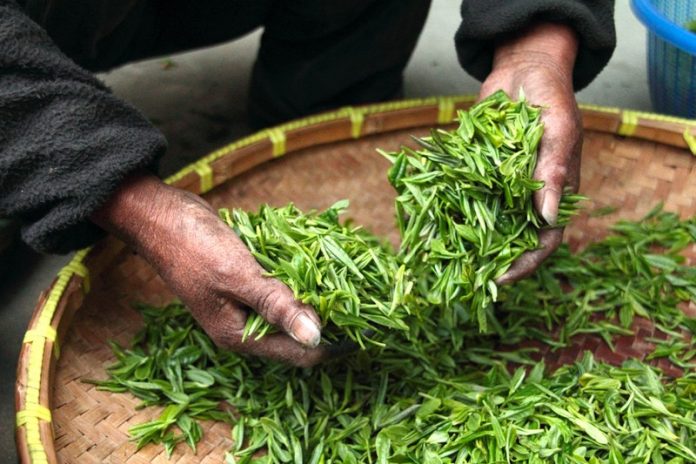
In a new study, researchers found that an antioxidant found in the green tea plant could become key to tackling tuberculosis one day.
The research was conducted by a team of international scientists led by Nanyang Technological University, Singapore (NTU Singapore).
Southeast Asia accounts for 41% of the world’s tuberculosis cases, with 4 million new cases every year.
While there are already drugs that target mycobacterium tuberculosis (M. tuberculosis) – the bacteria that causes the airborne disease—new ones are needed because the bacteria is increasingly showing resistance to many of the drugs.
In the study, the team discovered how the prominent compound, known as epigallocatechin gallate (EGCG), can inhibit the growth of a tuberculosis-causing bacteria strain.
The EGCG does so by binding to an enzyme that provides biological energy for cellular activity.
The EGCG is a natural antioxidant that occurs in a large amount in green tea.
The process results in a dip in the amount of energy the bacteria has for its cellular processes vital for growth and stability, such as cell wall formation.
The team also found the exact sites on the enzyme at which the EGCG needs to bind to in order to affect energy production in the bacterial cell.
These findings could pave the way for the creation of novel drugs to combat tuberculosis, one of the most deadly infectious diseases in the world.
The team is now looking at optimizing the activity of EGCG for increased efficiency and potency in fighting the tuberculosis bacteria.
Their ultimate goal is to develop a drug cocktail that will tackle multi-drug resistant tuberculosis.
A patent has been filed for the identification of the EGCG as a possible form of treatment for tuberculosis.
The lead author of the study is NTU Professor Gerhard Grüber.
The study is published in Scientific Reports.
Copyright © 2019 Knowridge Science Report. All rights reserved.



